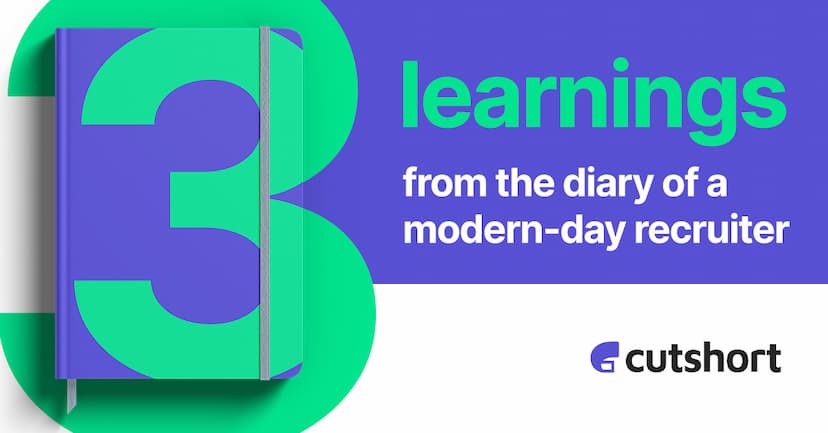We are almost in the year 2018. Hiring today is much different from what it was even 5 years ago. Good talent now is busy, distracted and even scarcer, which means attracting it today requires a different mindset.
The aim of this post (and the next part) is to cover some areas that recruiters need to reconsider in a modern context. In this first part of this series, let me cover the first part of the hiring process – making job descriptions and doing the initial screening.
Here are the 4 mistakes we often find in this first part of your hiring process:
1. Making an overdemanding job description
It is not uncommon to see companies publishing job descriptions that have a long list of “requirements” from the candidates.
In the product world, there is a concept of Minimum Viable Product. It basically means a product team needs to trim down the product to the most important feature set rather than keep adding more and more features. Similarly, your requirements in a job description need to be crisp and precise. Your objective is not to make a super-set of all requirements, it’s quite the opposite — finding the minimum number of requirements a candidate *must* meet. Nice-to-have requirements should be kept separate.
Let me take an example. Recently I have seen companies insisting on finding candidates with “DevOps + strong programming experience” or the more common a “good designer who can code front end”. While such overlaps would be great, you should try to see if you could hire for one core skill and the other could be learned by the candidate on the job.
2. Overemphasis on current skill versus learnability
This follows from the point above. Skills are important but in today’s extremely fast-paced professional world, they become obsolete very fast. Take mobile development. It’s hard to believe that Objective-C, which was hot in demand in 2014-15 has been replaced by Swift, which is a very different language. Even native Android development is being replaced by React Native for normal business apps. And the icing is that these apps can now be built by JavaScript developers with no previous Android experience. To take another example, tools such as Canva have made it possible for digital marketers to make decent creatives without needing a full-time designer.
The point is that in such fast-paced world, it’s important not to get fixated on just the current skills of the candidates.
Looking for strong fundamentals, capability and attitude to learn new skills fast are much more important.
3. Using unnecessarily high qualification criteria
A lot of companies (especially the hyper funded ones) restrict their search to only the people who studied at their preferred educational institutes or worked at some specific companies. Some companies get even more selective. I once heard about a company that said they will only consider developers with 10,000+ commits on GitHub!
I get the underlying reason here. Such companies want to minimize their risk and want to save them the time they would have to otherwise spend in selecting 1 good candidate from 100 mediocre ones.
The problem here is that these are not good qualification criteria. There are several smart developers who are not from IITs and don’t have time to contribute to open source on GitHub. They might be simply busy building awesome stuff that works like charm.
Blindly keeping such qualification criteria just limits the size of your talent pool and makes you chase the talent that is already discovered.
You might agree and ask back – but how do we discover that 1 % amidst so many others? Good question. Some companies are already doing it. See the next point below.
4. Adding friction to the hiring process
I understand that as a busy recruitment professional, you need to gauge the quality of the candidates before investing more time in them. But if you’re sending tests or assignments before engaging with them, you might be losing good candidates.
Good talent today has many options. Expecting them to spend time on the assignments sent by each company is unrealistic, especially if they are not yet sold on your opportunity.
Assessing candidates is your problem, not theirs.
The right way is to develop an eye for talent. Glancing through the projects, external social profiles and test scores on platforms such as CutShort should help you avoid this screening test as far as possible.
If you are going to send a screening test, don’t ignore the candidate experience. Keep it super short need and give it only after warming up the candidates about the exciting opportunity you have to offer.
Conclusion
Things have changed significantly in our professional world in last few years. Attracting talent is hard, so it’s important that you plan your hiring process carefully. If not, it will hurt in two ways. You will miss good candidates and worse, you might attract the wrong ones. And remember – there is no faster and surer way to destroy a company than hiring wrong people.
In the next post in this series, we will look at how to refresh the way you conduct your interviews, schedule those interview, offer letter negotiations and engage with the candidate’s post-offer stage.
Have a viewpoint? Would love to hear from you in the comments!





